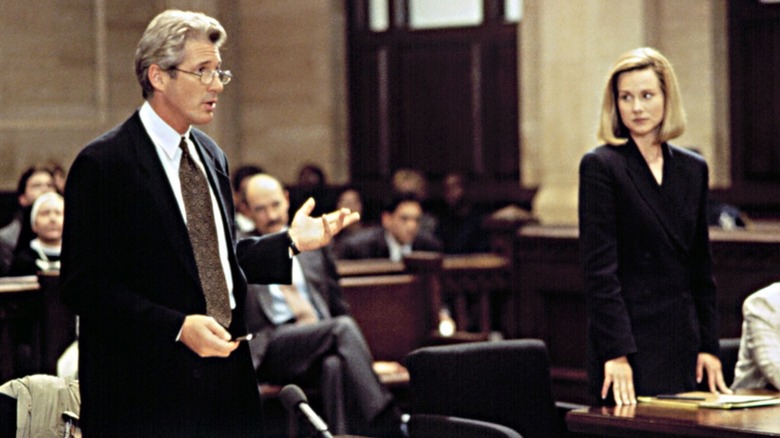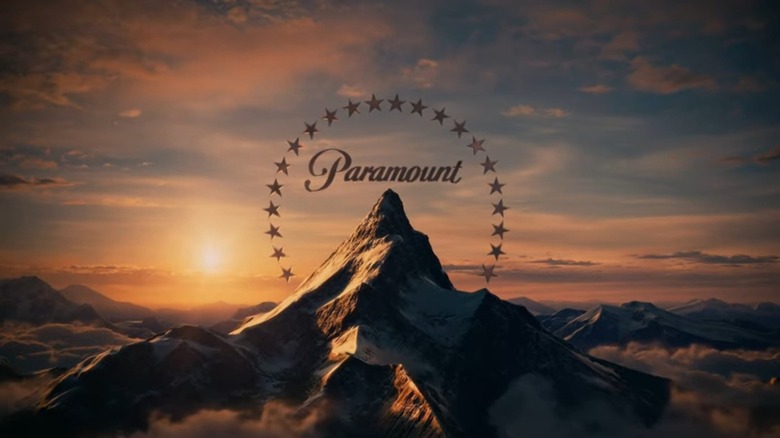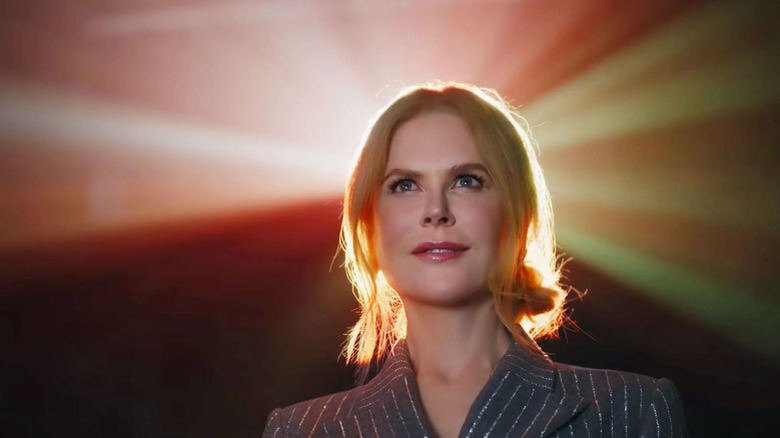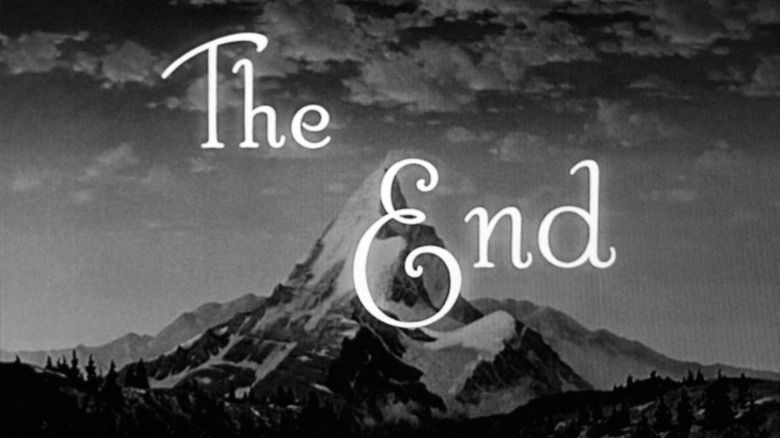Paramount Lost A Supreme Court Showdown That Changed Movie Theaters Forever
In the 1920s, Hollywood was the Wild West. There were few unions protecting film workers, apart from the International Association of Theater and Stage Employees, or IATSE, which was formed in 1893. It wouldn't be until 1933 that the Screen Writers Guild — later the WGA — would come together, followed shortly by the founding of the Screen Actors Guild. The Teamsters Local 399 started up at about the same time; these unions were, of course, a direct result of the New Deal.
Before 1933, Hollywood could exploit workers openly. The Wild West cowboys were actually millionaire executives, and the Big Five studios — RKO, 20th Century Fox, Metro-Goldwyn-Mayer, Warner Bros., and Paramount — along with the Little Three — Universal, United Artists, and Columbia — kept actors under strict contracts and bought up all the competition. Indeed, in what might seem like a pretty wild exploitation of market power, the Big Five also owned their own theater chains, allowing them to control production from first inception to last screening. It was known as "vertical integration," and studios actively conspired to keep ticket prices high. It was a massive monopolization of the industry. According to the 2001 book "Engulfed: The Death of Paramount Pictures and the Birth of Corporate Hollywood" by Bernard F. Dick, the eight studios collectively controlled 70% of all movies. The system persisted for decades.
Then, in 1948, the Supreme Court heard United States v. Paramount Pictures, addressing the theatrical monopoly head-on. The Department of Justice claimed that studios "had engaged in a wide-spread conspiracy to illegally fix motion picture prices and monopolize both the film distribution and movie theater markets." The case produced the Paramount Decrees, which were immediately put into effect.
The party ended. It wouldn't begin again until 2020.
The Paramount Decrees that changed Hollywood
Yes, what is typically referred to as "the Studio System" was, in fact, a deliberate effort by the Big Five to restrict competition and retain control. Theaters would ensure that their well-moneyed studio products showed in their own theaters, while litter neighborhood theaters were forbidden from getting "A" products. The Paramount Decrees were a boon for the industry overall, but a major blow to the millionaires. When studios had to sell off their theaters, neighborhood theater owners could re-emerge. Throughout the 1950s, local, low-budget filmmakers suddenly had available venues, and could personally bring prints to their neighborhood theaters, asking for exhibition. There's a reason there was a boom of low-budget shlock, drive-in exploitation, and an uptick in underground queer filmmaking in the late 1950s.
The Paramount Decrees took out an already-weakened industry. Thanks to the House Unamerican Activities Committee — which, in paranoid fashion, sought to root out "Communists" in the industry — many Hollywood employees were blackballed. Additionally, the British film industry wanted to boost their own numbers and enacted a 75% tax on American imports. Hollywood was struggling to stay the juggernaut it wanted to be.
The Supreme Court case listed Paramount as the defendant as they were the studio that owned the greatest number of theaters at the time; by the estimation of "Englufed," it was 1,450 theaters. To put that into perspective AMC currently owns only 900 theaters. However, all eight of the above-mentioned studios were included in the suit. Even the Little Three were accused of making deals with the major studio's theaters as opposed to smaller, independent chains. Paramount and its co-defendants were given a year to sell off their theaters.
Does AMC make movies better?
Paramount had to focus on quality. From 1949 to 1955, a Paramount movie was nominated for Best Picture at the Academy Awards.
One might think the Paramount Decrees ushered in a glorious new era for indie films, but the studios continued to manipulate the systems in new ways, allowing for equally corrupt practices to begin. For one thing, the end of the Studio System ended long-term employee contracts, forcing all film workers to become freelancers. As we all know in 2024, freelance work is difficult and time-consuming (ask any Uber driver) as most industries refuse to pay fair wages or offer healthcare to non-employees. It's worth noting that television was on the rise in the 1950s, and freelancers began to rely on residuals from replays, reruns, and TV broadcasts. It's certainly worth noting that every major Hollywood labor strike since 1948 has been largely about studios withholding residual payments from actors, writers, and other artistic workers.
Paramount, as a result of the decrees, split the company into two branches. One was to handle production and distribution and the other was to handle exhibition. The two companies weren't allowed to own stock in the others, employees weren't allowed to own stock in both companies, and they were run without any inside communication.
Over the next few decades, however, a lot of the distinctions began to melt away in the face of a growing tide of corporate consolidation. Paramount may not have been allowed to own and operate a theater, but what if a bigger, more insidious media conglomerate bought both Paramount and a theater chain in addition to owning a publishing company, several cable TV networks, an insurance company, and others?
Where are we now in the movie industry?
The Paramount Decrees were in place for 72 years before being overturned in 2020. This caused a lot of concern among cineasts that vertical integration would once again run rampant. Indeed, thanks to the Streaming Wars, vertical integration was already back in practice, allowing studios to be in charge of production as well as exhibition through their specially branded streaming services. The Paramount Decrees should have covered this, of course, but the language of the 1948 case was specifically about theater ownership and studios were happy to drive their trucks through the loophole. Also, because non-film-centric companies like Apple and Amazon were getting in on the streaming game, the Paramount Decrees didn't technically apply to them; Amazon was a delivery company, not a studio.
Ironically, the overturning of the Paramount Decrees leveled the playing field for studios that were losing out massive market shares to the likes of Netflix. Now the studios could play alongside the streaming companies not beholden to the 1948 laws. Also, Netflix refused to share their rating numbers, allowing residuals to be withheld. One might recall a massive, industry-wide strike in 2023 about this matter.
A 2022 article in Promarket pointed out that the new streaming landscape opened the door to a new round of price-gouging and market manipulation, however. With studios controlling their own theaters, they could charge what they want, effectively pricing out competition ... again. It's also been spectacularly tragic to watch studios rapidly transform from art-producing companies to stock-obsessed money machines. The Big Five all struggle, having invested too much in an oversaturated streaming market. Warner Bros. is being stripped for parts and Paramount is hoping to merge.
We'll have to wait to see where the chips ultimately fall for Hollywood.



